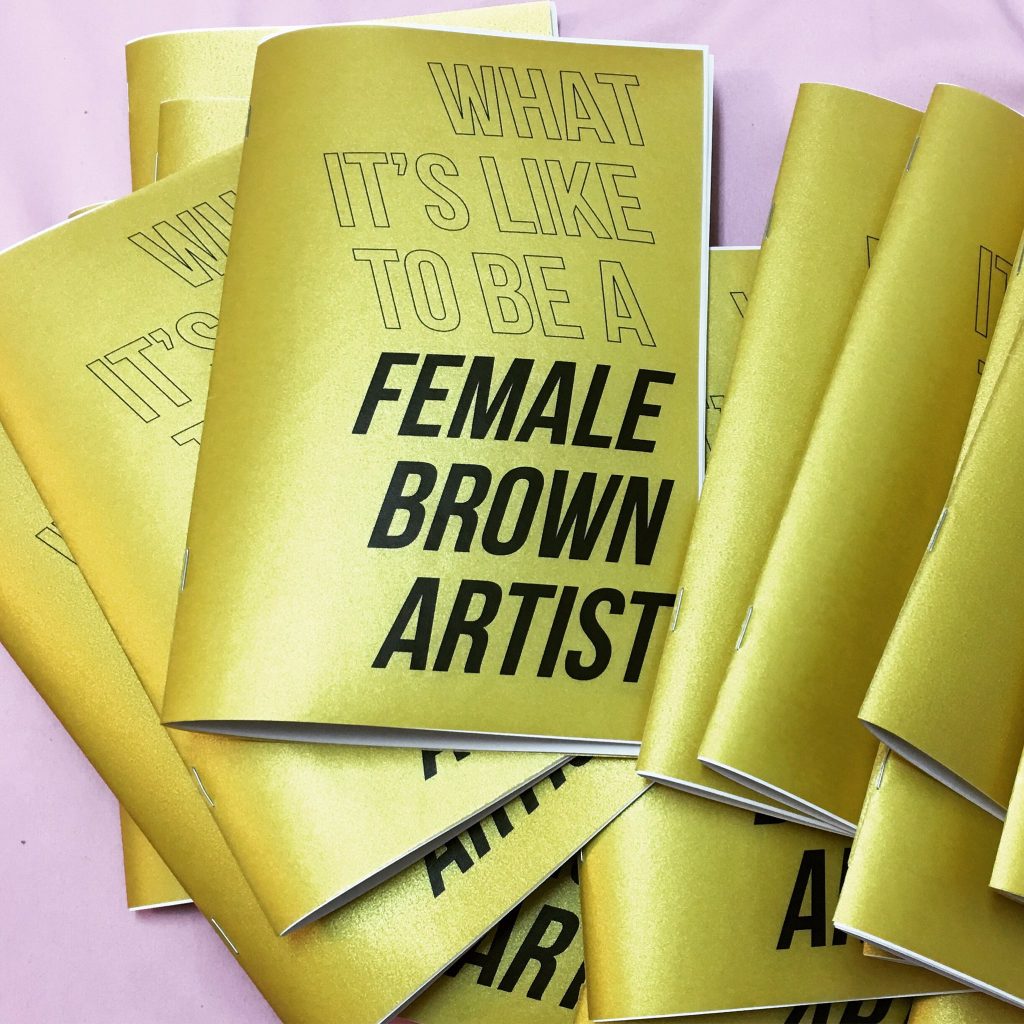
What It’s Like to Be a Female Brown Artist
Perzine, Christina L’Eucatastrophe, 28 pgs
The first time Montreal-based artist Christina L’Eucatastrophe travels to participate in a zine fair in the states, she endures an eye-opening experience that will stay with her long after the event is over. Here, she recounts and responds.
In Canada, L’Eucatastrophe is a seasoned zine fair vendor, accustomed to socializing with friends and strangers who would stop by her table. L’Eucatastrophe lists the usual logistical anxieties — “Did I print enough zines? Do I have enough change? Do I trust this fellow zinester to look after my stuff while I go to the bathroom?” — that once seemed to be the greatest challenge of tabling at fests. But having left her comfort zone and arriving in the United States, L’Eucatastrophe quickly realizes that her attention is no longer focused on logistics, but rather, on every aspect of her surroundings and her interactions in a new place. And she notices so many things.
Being a female brown artist amongst a sea of white faces can bring substantial challenges, as L’Eucatastrophe begins to understand in a new way. Having arrived early to start her table set-up, she watches as countless other vendors arrive later but are directed to tables before her. Finally, she manages to get the attention of the organizer: “He turned around to face me. It was the first time our eyes met directly. ‘Are you even an artist?’”
Immediately, this insulting question and humiliating circumstance begin to rattle relentlessly in L’Eucatastrophe’s head. She initially can’t understand why her presence was doubted so, having followed the event protocols. When she realizes what’s happened, this introspective moment sparks new connections between incidents in her life and their correlation to race. From toxic, one-sided friendships, to having her creative ideas stolen and exploited for profit and fame, L’Eucatastrophe’s must revisit all of her life experiences with race and gender in mind.
“From that moment on, whenever treated differently, you ask yourself over and over if it has to do with your race,” she writes. “Do white people ever have to wonder the same way you do?” L’Eucatastrophe demonstrates and validates the experiences that many people of colour go through on a regular basis and offers a sense of solidarity as well as strength. She also opens up space for the justifiable rage it can incite.
With its gold cover and large, emphatic typography, the layout of What It’s Like to Be a Female Brown Artist is neat, sharp, and beautifully assembled. More importantly, it is achingly clear in telling its uncomfortable truths.
